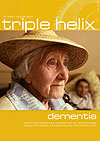Almost ten years ago, after the 1999 Donaldson Report recommended allowing scientists to clone human embryos for stem cell research using somatic cell nuclear transfer (SCNT), Triple Helix called the research 'unethical and unnecessary' and sounded a strong note of caution. We said that the enthusiasm for this new technology was 'based more on political expediency than wise reflection' and warned that 'the prospect of revolutionary new treatments (would) undoubtedly entice investors to move funds away from other less glamorous, but potentially more promising avenues of research'. (1)
Since 2000 we have witnessed the glorious failure of scientists to produce patient-specific stem cells from cloned human embryos. Subsequently, the limited availability and dangers of harvesting human eggs for research fuelled the shift to using cytoplasmic animal-human hybrids ('cybrids'). This was supported by a massive propaganda campaign in 2007-8 involving scientists, patient groups, and politicians, and led by Liberal Democrat MP Evan Harris with the willing co-operation of Times Science Correspondent Mark Henderson. 2 As a result, in an impassioned Observer article last May, Prime Minister Gordon Brown welcomed animal-human hybrids as 'a profound opportunity to save and transform millions of lives' and expressed his commitment to this research as 'an inherently moral endeavour that can save and improve the lives of thousands and over time millions of people'. The measure was supported in a heavily whipped vote as part of the Human Fertilisation and Embryology Bill.
Now it appears, before the new Act has even come into force, that stem cells from animal-human hybrids are seen as a poor investment and almost certainly won't work. In January, the two leading UK researchers who had been granted licences for this work, Stephen Minger of Kings College London and Lyle Armstrong at Newcastle University Centre for Life, were denied funding by the Medical Research Council. (3) The British Medical Journal (4) reported that the grant applications had been turned down because the reviewers considered that they were not competitive in the face of the lack of overall funding for medical research in the United Kingdom. Minger himself admitted that he believed the distribution of research funding should be competitive, based on assessment of scientific value and cost, and noted that induced pluripotent stem cells are cheaper to set up than human-animal hybrid stem cell research. No one it seemed wanted to invest money in the new research, given the low likelihood of it ever yielding results and the emergence of cheaper ethical alternatives.
Less than three weeks later, in a landmark paper in Cloning and Stem Cells, Robert Lanza and colleagues from Advanced Cell Technology, Massachusetts, demonstrated that animal oocytes lack the capacity to fully reprogramme and activate adult human cells, and specifically the pluripotency-associated genes needed for stem cell production. 5 The hybrid embryos from mouse, cow and rabbit eggs looked microscop-ically normal but were genetically flawed. Journal Editor Sir Ian Wilmut, the British cloning pioneer involved in the 1996 creation of Dolly the sheep, concluded that 'production of patient-specific stem cells by this means would (now) be impracticable'. (6)
Wilmut had himself already abandoned embryonic stem cell research, in favour of iPS, induced pluripotent stem cells (produced ethically by dediff-erentiating somatic cells to produce embryonic-like stem cells). Yamanaka and Thomson's seminal work in this area in late 2007 (7) was later dubbed the scientific breakthrough of the year by the magazine Science. 8 Some scientists had expressed concern that Yamanaka had used virus vectors to transfer the genes which would reprogramme the somatic cells. But on 1 March, in the very latest twist, a UK and Canadian team succeeded in turning somatic cells into embryonic-like stem cells, without using viruses. (9) (10)
These recent developments along with advances in adult stem cell technology were highlighted in a debate in the House of Lords on 3 March, where Innovation and Skills Minister Lord Drayson struggled to find arguments to justify the government position. In a further ironic development, while the government has seemingly been driving up a scientific dead-end street, leading British adult stem cell scientists like Newcastle's Colin McGuckin have migrated abroad. They blame the British government's obsession with embryonic stem cells for siphoning off funding for more promising adult stem cell research. (11)
Perhaps the last word belongs to leading US stem cell scientist James Sherley, who commented on these latest findings: 'For those trained in the science, this is not news, but instead a completed fate that was known from the beginning'12 – a timely reminder that in good science the end does not justify the means (Romans 3:8).
1. Saunders P.
Therapeutic Cloning
Triple Helix 2000; Autumn:3
2. Henderson M. - Animal-human embryo research is approved.
The Times 2008; 18 January
www.timesonline.co.uk
3. Connor, S. - Funding Halted for Stem Cell Research.
Independent 2009; 13 January.
www.independent.co.uk
4. Lack of Funds slows human-animal stem cell research despite legislation in favour.
BMJ 2009; 338 :194-5
5. Lanza R et al. - Reprogramming of Human Somatic Cells Using Human and Animal Oocytes.
Cloning and Stem Cells 2009; 11(2):1-11
6. Animal eggs not suitable substitutes to produce stem cells.
Genetic Engineering and Biotechnology News 2009; 2 February
www.genengnews.com
7. Saunders P. Stem Cell Delusions - The government juggernaut rolls on.
Triple Helix 2008; Easter:4
8. Sample I. Leading journal names the top 10 scientific breakthroughs of 2008.
The Guardian 2008; 18 December.
www.guardian.co.uk
9. Hayden E, Baker M. - Virus-free pluripotency for human cells.
Nature 2009; 458:19. doi:10.1038/458019a
www.nature.com
10. 'Ethical' stem cell creation hope.
BBC News Online 2009; 1 March.
http://news.bbc.co.uk/1/hi/health/7914976.stm
11. Corbyn Z. You would barely know adult stem cells exist.
Times Higher Education 2008; 23 October.
www.timeshighereducation.co.uk
12. http://spuc-director.blogspot.com/ 2009/02/end-of-human-cloning.html
































